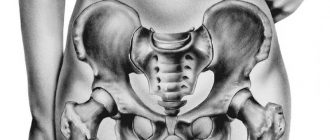Dirty sneakers can ruin a stylish outfit. Knowing how to clean shoes properly extends their life and keeps them looking great. Good shoe care eliminates bacteria and prevents early wear.
Many people throw away soiled sneakers. They don't realize that proper cleaning can make shoes look almost new again. This guide covers hand-cleaning and machine washing options.
Not all footwear is created equal. Canvas sneakers, leather boots, and athletic shoes need different care approaches. Each type requires specific methods to avoid damage and get the best results.
You'll learn which cleaning products work best for different materials. We'll show you how to tackle stubborn stains step-by-step. You'll also discover how to dry your footwear correctly to prevent warping or shrinking.
These simple techniques will boost your confidence in shoe cleaning. You'll be ready to handle any footwear cleaning challenge, even if you're a beginner.
Why Regular Shoe Cleaning Matters
Your shoes face daily wear from dirt, moisture, and friction. Regular cleaning is crucial for proper footwear care. Sweat, mud, and debris can break down shoe materials, shortening their lifespan.
Clean shoes perform better in every way. Athletic footwear keeps good traction. Leather stays flexible and doesn't crack. All shoes have less odor and bacterial growth. Regular shoe care tips improve both looks and function.
Maintaining shoes has big financial benefits. Cleaning can extend your footwear's life by months or years. This saves you money on replacements. Clean shoes also protect your health.
They lower your risk of foot fungus and other skin problems. Shoe cleaning is a smart investment. It safeguards your wallet and your well-being.
Essential Supplies for Effective Shoe Cleaning
Proper shoe cleaning requires the right tools for different materials and challenges. You don't need expensive products. Many effective shoe cleaning hacks use common household items.
Having the right supplies makes cleaning easier and more effective. This applies to everyday sneakers and luxury leather shoes alike.
Basic Cleaning Tools and Products
Every sneaker cleaning guide covers the basics. Here are the must-have items for your shoe cleaning kit:
- Soft-bristled brushes (old toothbrushes work perfectly)
- Microfiber cloths or clean rags
- Mild dish soap or laundry detergent
- White vinegar (a natural cleaner and deodorizer)
- Baking soda (for odor removal)
Mix equal parts warm water and white vinegar with dish soap. This shoe cleaning hack works well on most materials.
For quick touch-ups, try baby wipes or magic erasers. These work great on rubber soles and white canvas areas.
Material-Specific Cleaning Supplies
Different shoe materials need special care. Add these items to your basic kit:
- Leather cleaner and conditioner for genuine leather shoes
- Suede brush and eraser for nubuck and suede footwear
- Fabric protector spray for canvas and textile shoes
- Silicone-based waterproofing spray for outdoor footwear
- Saddle soap for fine leather boots
For eco-friendly options, try biodegradable products or natural alternatives. Coconut oil works well as a leather conditioner.
Diluted castile soap is great for delicate materials. Quality, material-specific products extend your shoes' lifespan better than harsh cleaners.
How to Wash Shoes by Hand: Step-by-Step Guide
Hand washing your shoes gives you full control over the cleaning process. It helps prevent damage that might occur in washing machines. With the right approach, even your dirtiest shoes can look almost new again.
Preparing Your Shoes for Cleaning
Start by removing the laces and insoles from your shoes. These parts should be cleaned separately. Use a soft brush or dry cloth to remove loose dirt from the surface.
For heavily soiled areas, apply a small amount of pre-treatment solution. You can use a specialized shoe cleaner or mix mild dish soap with warm water. Never soak your shoes completely before cleaning.
Stuff newspaper inside flexible shoes to help them keep their shape during cleaning. This step is crucial for canvas sneakers and other soft footwear.
Hand Washing Technique for Different Materials
For canvas and fabric shoes, use warm water and mild detergent. Gently scrub in small circular motions with a soft cloth or brush.
Clean leather shoes with cool water and specialized leather cleaner. Apply with a soft cloth to avoid scratching. Work the cleaner in gently and wipe away excess moisture quickly.
Use a soft toothbrush with mild soapy water for mesh athletic shoes. The bristles can reach through the mesh openings without causing damage. Clean foam midsoles with a magic eraser or soft cloth.
Suede and nubuck need special care. Use a suede brush and cleaner made for these materials. Always brush in the same direction as the nap.
Tackling Stubborn Stains and Scuffs
For grass stains, apply a paste of baking soda and water. Let it sit for 30 minutes, then gently scrub with a soft brush. For white shoes, mix equal parts hydrogen peroxide and baking soda.
Treat oil marks with cornstarch or baby powder. Let it sit overnight to absorb the oil, then brush away and clean normally. Persistent stains might need a second treatment.
Remove salt stains with equal parts water and white vinegar. Dab the solution onto the stains, then wipe clean with plain water. For scuffs on rubber soles or leather, try using a pencil eraser gently.
Remember that patience is key—aggressive scrubbing can damage your shoes more than the stain itself. After treating stains, rinse the cleaning agents thoroughly with a clean, damp cloth.
Machine Washing Shoes: Do's and Don'ts
Machine washing shoes can be convenient, but it requires caution. Not all shoes can handle this treatment. Knowing when and how to machine wash can protect your footwear and appliance.
Which Shoes Are Safe for Machine Washing
Canvas sneakers, running shoes with synthetic uppers, and most athletic shoes handle machine washing well. These materials can withstand moisture and agitation without losing shape.
However, some types should never go in your washing machine:
- Leather or suede shoes (water damages these natural materials)
- Shoes with delicate embellishments or sequins
- Footwear with built-in lights or electronics
- Shoes with significant glued components
- High-end designer footwear
For athletic shoes, check the manufacturer's care instructions. Many brands now provide specific guidance on machine washability.
Proper Machine Settings and Preparation
Prepare shoes properly before washing. Remove laces and insoles to wash separately. Brush off loose dirt to prevent clogging your machine.
For best results when machine washing shoes, follow these guidelines:
- Use protective bags - Place shoes in a mesh laundry bag or pillowcase
- Add balance - Include a few old towels to balance the load
- Select gentle cycle - Always use the delicate or gentle setting
- Choose cold water - Hot water can warp shoes and damage adhesives
- Use mild detergent - Avoid bleach or harsh chemicals
Set your machine to low or no spin. High-speed spinning can damage both shoes and washing machine. If possible, disable the spin cycle entirely.
Protecting Your Washing Machine
Improper shoe washing can harm your appliance. Uneven weight can unbalance the machine, causing vibration and potential mechanical problems.
To protect your machine while washing shoes:
- Always use protective mesh bags to contain shoes
- Balance the load with towels placed opposite the shoes
- Never wash more than two pairs at once
- Listen for unusual sounds—stop if the machine thumps loudly
Limit machine washing of shoes to occasional deep cleans. Frequent washing breaks down adhesives and structural elements. For routine cleaning, spot cleaning is best for extending shoe life.
Material-Specific Cleaning Techniques
Proper cleaning techniques can extend your favorite shoes' life. Different materials need unique approaches for maintenance. The right method can make old shoes look new again.
Using the wrong cleaning method might ruin your footwear. It's crucial to know the correct technique for each material.
Canvas and Fabric Sneakers
Canvas and fabric sneakers are easy to deep clean at home. For light dirt, use mild soap and water. Mix laundry detergent with warm water and scrub gently.
For heavy stains, make a paste with baking soda and hydrogen peroxide. Apply it to stains and wait 30 minutes before scrubbing. This works well for yellowed white canvas sneakers.
To deep clean canvas shoes, remove laces and insoles first. Wash these separately in a mesh bag. Use an old toothbrush for hard-to-reach spots.
Leather and Suede Footwear
Leather shoes need gentle care and specific products. Remove surface dirt with a soft cloth. For smooth leather, use leather cleaner with circular motions.
Don't soak leather, as it can warp and crack. Apply leather conditioner after cleaning. Finish with a matching polish for shine and protection.
Suede requires even more care. Use a suede brush to lift dirt. For stains, use a suede eraser or fine sandpaper.
Never use water on suede. Instead, use a suede-specific cleaner. Apply protective sprays to both leather and suede every few months.
Athletic and Running Shoes
Performance footwear needs balanced cleaning. Remove insoles and laces before cleaning. These parts often harbor bacteria and need separate attention.
Brush off loose dirt from the shoe exterior. Clean with mild soap and warm water. Focus on mesh areas where sweat collects.
Use a magic eraser on foam midsoles. For scuff marks, try baking soda paste. Avoid harsh chemicals when cleaning sneakers with special features.
Sandals and Flip-Flops
Sandals collect skin oils and dirt. For rubber flip-flops, use dish soap and warm water. Scrub well, especially on footbeds.
Clean leather sandals with a damp cloth and mild soap. Then condition the leather. Spot clean fabric straps with a toothbrush and gentle detergent.
Use minimal moisture on cork footbeds. Apply a special cork cleaner to prevent warping.
Boots and Winter Footwear
Winter boots face harsh conditions like salt and snow. Brush off dried salt and dirt first. Clean leather boots with a damp cloth and leather cleaner.
For salt stains, use a water and white vinegar mix. Brush suede boots thoroughly, then use a suede cleaner.
Clean boot interiors too. Remove insoles and sprinkle baking soda inside. Let it sit overnight, then vacuum for fresher-smelling boots.
Proper Drying and Post-Cleaning Care
Drying and care after cleaning are vital for your shoes. These steps keep your footwear in top shape. Good drying methods protect your shoes' look and feel.
Air Drying vs. Machine Drying
Air drying is almost always the best option for wet shoes. Place damp shoes in a well-aired spot at room temp. Avoid sun or heat, which can harm materials.
Drying times vary by material. Canvas sneakers need 8-10 hours, while leather shoes take 24-48 hours. For quicker drying, stuff shoes with paper towels and replace often.
Avoid machine drying when possible. It can damage your shoes. If needed, use low heat and a mesh bag.
Reshaping and Maintaining Form
Wet shoes can lose shape while drying. Stuff the toe box with paper to keep its form. This shoe care tip stops collapsing and soaks up moisture.
Cedar shoe trees are great for maintaining shoes as they dry. They absorb wetness and keep the shoe's shape. Use boot shapers for tall boots.
Fix problem areas when shoes are damp. Gently reshape collapsed heels or flat toe boxes then.
Deodorizing Techniques
Fresh-washed shoes need odor protection. Use baking soda overnight to absorb smells. Shake it out before wearing. Try charcoal pouches for stubborn odors.
Essential oils offer natural scents. Add drops to a cotton ball and place in shoes overnight. They smell nice and fight germs.
Shoe deodorizers work well too. Sprays kill odor-causing bacteria. UV sanitizers are high-tech options for sports shoes. Good drying prevents most smells.
Troubleshooting Common Shoe Cleaning Problems
Shoe cleaning doesn't always go smoothly. Problems can pop up, even with great cleaning tricks. Let's look at how to fix common issues and save your shoes.
Dealing with Color Bleeding
Color bleeding can ruin multi-colored shoes during cleaning. Test a hidden spot with your cleaner first. If colors run, rinse with cold water and blot with a clean cloth.
For shoes with color transfer, dab the area with vinegar and water. On white shoes, use diluted bleach for non-leather materials only.
Fixing Shrinkage Issues
Did your clean shoes shrink? For canvas and fabric, wear them damp with thick socks. Stuff with newspaper while damp to keep their shape as they dry.
Leather shoes need a different fix. Use leather conditioner and a shoe stretcher overnight. For minor shrinkage, wear thick socks and warm tight spots with a hairdryer.
Addressing Lingering Odors
Bad smells after cleaning mean your shoes need deeper treatment. Remove insoles and treat them with baking soda or shoe deodorizers. Freeze shoes overnight to kill smell-causing bacteria.
Try antimicrobial sprays made for shoes to eliminate odors. If these sneaker cleaning guide tips don't work, replace the insoles instead of the whole shoe.
Preventative Care to Extend Shoe Life
Preventative shoe care saves time on deep cleaning later. Proactive maintenance keeps footwear fresh and extends its lifespan. Simple practices protect shoes from damage and reduce deep cleaning frequency.
Protective Sprays and Treatments
Different shoe materials benefit from specific protective treatments:
- Water repellents - Essential for canvas, fabric, and leather shoes to prevent water damage and staining
- Stain guards - Create an invisible barrier that repels dirt and liquids before they can set in
- UV protectors - Help prevent fading and color deterioration, especially for suede and colored leathers
Test protectants on a hidden area first. Apply thin, even coats and allow proper drying time. Natural alternatives include beeswax-based products for leather and white vinegar solutions for canvas.
Regular Maintenance Routine
Establish these simple habits to maintain your shoes between deep cleanings:
- Wipe shoes with a dry cloth after each wear to remove surface dust
- Address small stains immediately with a spot-cleaning approach
- Store shoes with shoe trees or stuffed казино за криптовалюту with acid-free paper to maintain shape
- Rotate your footwear to allow shoes to air out between wears
- Reapply protective treatments monthly or after exposure to harsh conditions
This routine takes minutes weekly but adds years to your shoes. Early intervention is crucial for addressing small scuffs or stains. Tackling issues promptly prevents them from becoming permanent.
Keeping Your Shoes Fresh Between Washes
Quick touch-ups can keep your footwear looking great between deep cleanings. For small marks, use a damp cloth to wipe them away immediately. Baby wipes are excellent for quick clean-ups on most materials bitz казино онлайн.
Dry brushing removes surface dirt from clean sneakers without getting them wet. A soft brush can lift away dust and debris in seconds. For smelly athletic shoes, sprinkle baking soda inside and let it sit overnight.
Proper storage is crucial for fresh shoes. Let your shoes air out after wearing them. Cedar shoe trees help maintain shape while absorbing moisture and preventing odors.
Rotate between different pairs of shoes when possible. This allows each pair to fully dry out between wears. These simple habits will extend the time between washing your athletic shoes.






